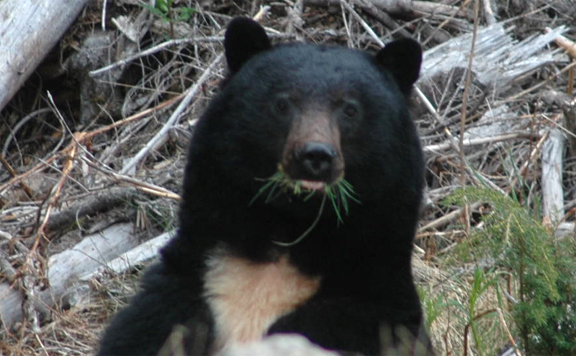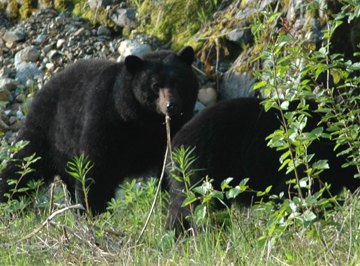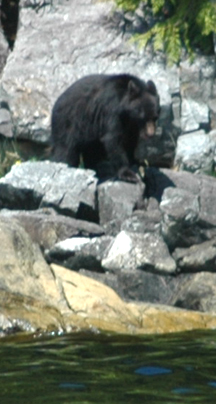
![]()

Photo 1: Black Bear with a white chevron across its chest. This bear was photographed in the Memekay River Valley in the spring. Black Bears eat grass among other things. They are true omnivores.
Black Bears: Ursus americanus vancouveri.
Photo 2: Black Bear sitting on haunches.
Black Bears are the most common bears in North America. Though they all belong to the same species Ursus americanus, several subspecies are now recognized including the Vancouver Island Black Bear, or Ursus americanus vancouveri. At one time it was thought that there were less than 200,000 black bears in North America, but numbers have rebounded since then.


Photo 3: Out of Hibernation.
Black Bears hibernate during the winter months, going as long as 100 days without eating drinking, urinating or defecating. They maintain a high body temperature with the help of their thick fur. And, they are light sleepers, being able to wake up if disturbed.
Photo 4: Young Black Bear foraging in the intertidal zone.
Black Bears are omnivorous. Black bears eat berries, fruits, nuts, flowers, leaves, roots, and other vegetation as well as insects and small mammals.. In the spring they feed on grasses and new shoots to sustain themselves until summer when they have a chance to fatten up on berries, insects and whatever else they can forage, including small animals and fish. Vancouver Island Black Bears have it relatively easy with an extra chance to fatten up when the salmon head up rivers to spawn in late summer to fall.

References: PBS Special on Hibernation
